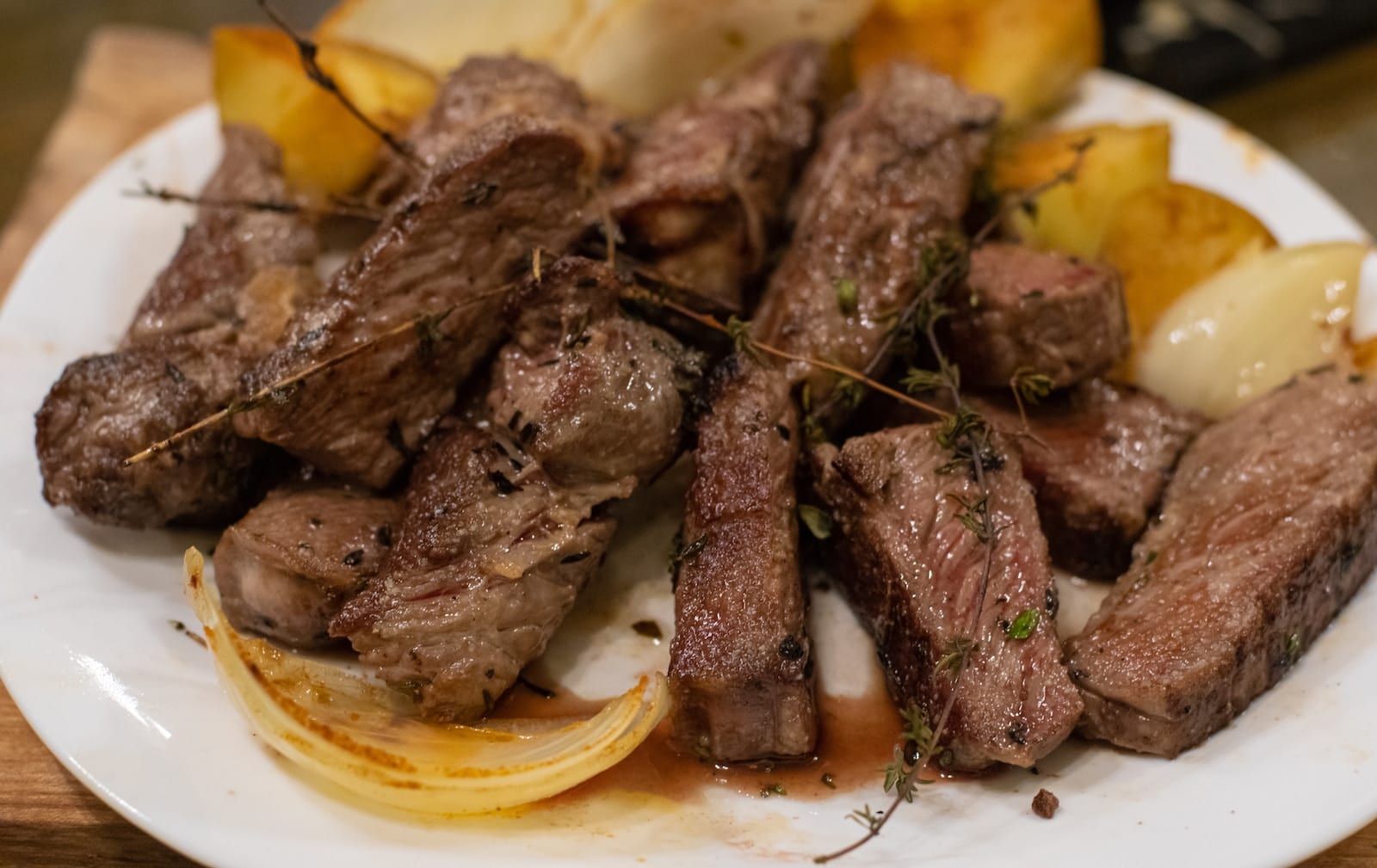Steak is a beloved dish across Europe, but the methods of preparing it can vary greatly between countries. From quick high-heat grilling to low-and-slow braising, Europeans have perfected numerous techniques for cooking beef to juicy, flavorful perfection.
In this article, we’ll explore 3 of the most popular ways that Europeans prepare beef steak, each showcasing the unique flavours and cooking styles of different regions. Whether you prefer your steak charred on the outside and red on the inside or slow-cooked until butter-soft, you’re sure to find inspiration from the diverse beef steak recipes across Europe. Read on to learn how to make steak like a pro, European style.
Method 1 – Grilled Beef Steak with Herb Butter (France):
In France, steak is often cooked quickly over high heat and served with rich, flavoured butter. This method accentuates the natural flavour of quality beef with a nice char while keeping the interior pink and juicy.
For French-style grilled steak, choose a thick, well-marbled cut like ribeye, porterhouse or T-bone. Pat the steak dry and brush lightly with oil. Season generously with salt and pepper. Place the steak on a preheated grill or grill pan over high heat. Resist the urge to move it – you want a dark, caramelized crust to form. Grill for 4-6 minutes per side for medium-rare doneness.
While the steak grills mash together softened butter, minced parsley, lemon zest, garlic, and shallots. Spread the herb butter over the resting steak until melted. The butter bastes the steak while also providing an extra hit of brightness and flavour.
Serve the steak immediately with the pan juices poured over the top. Crispy roasted potatoes or a fresh salad make perfect accompaniments. This is steak at its simplest and most delicious.
Method 2 – Beef Wellington (England):
For special occasions, the British turn to a lavish, retro classic – Beef Wellington. Tender filet mignon is coated in pâté and duxelles, then wrapped in puff pastry and baked.
To make Beef Wellington:
Season a filet mignon steak aggressively with salt and pepper and sear it in a hot skillet for 1-2 minutes per side. Allow it to cool, then coat it with mustard. Spread pâté in an even layer over the steak, then top with a mushroom duxelles mixture (finely chopped mushrooms cooked down with shallots and herbs).
On a sheet of puff pastry, place the coated steak. Wrap the pastry tightly around the steak, sealing the edges with egg wash. Chill for at least 30 minutes before baking at 400°F for 20-25 minutes until golden brown.
Allow the Wellington to rest for 10 minutes before slicing to allow the juices to redistribute. The result is a spectacular presentation with flaky pastry encasing a perfect medium-rare steak. The earthy duxelles provides extra umami flavour. Serve whole or sliced with roasted vegetables for an elegant English classic.
Method 3 – Slow-Cooked Beef Stew (Belgium):
Belgian beef stew, also known as carbonade flamande, is the ultimate cold-weather comfort dish. Cubed beef chuck is gently braised for hours in a Belgian ale until meltingly tender and full of flavour.
To make the stew:
Dredge cubed beef chuck in flour seasoned with salt and pepper. Brown the beef in batches in hot oil. Remove the meat and cook down sliced onions and garlic until caramelized. Deglaze the pan with a bottle of Belgian ale like Chimay.
Return the beef to the pot along with the ale and bring to a simmer. Add in diced carrots, celery and cubed potatoes. Season with thyme, bay leaves, mustard powder, brown sugar, and red wine vinegar.
Allow the stew to simmer gently on low heat for 2-3 hours until the beef is fall-apart tender. If the stew becomes too thick, add more ale or beef stock.
Serve the rich stew ladled over buttery egg noodles or mashed potatoes to soak up the luscious gravy. Sprinkle fresh parsley over the top. Enjoy with a Belgian ale, which complements and deepens the stew’s complex flavours.
Ready to eat? I mean, to cook?:
From quick grilling to elaborate baking to slow braising, Europeans have perfected diverse techniques for cooking incredible beef steak. These methods – charring steak over fire like the French, wrapping in pastry like the British, or braising in ale like the Belgians – showcase both traditional and modern flavours that make steak an enduring classic across Europe.
Grilled steak with herbed butter highlights fresh herbs and the natural taste of beef. Beef Wellington takes lavish ingredients like pâté and puff pastry to create an elegant presentation. And slowly-simmered carbonade flamande transforms a tougher cut into a luscious, meltingly tender stew.
The next time you cook steak, try one of these European-inspired methods. Or explore even more global ways to prepare beef, from Italian bistecca Fiorentina to German Jägerschnitzel. With a world of options, you’re guaranteed to find new favourite ways to cook this meaty icon.
So gather ingredients, fire up your stove or grill, and enjoy an international steak tour without ever leaving your kitchen. Your tastebuds will thank you!












